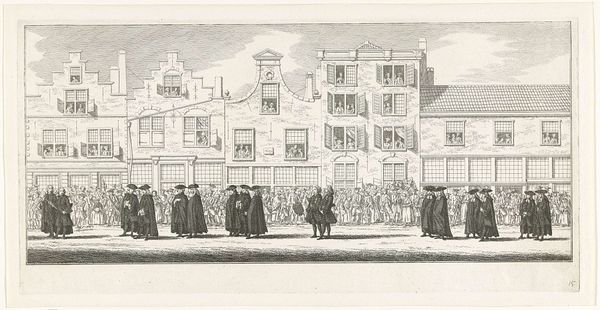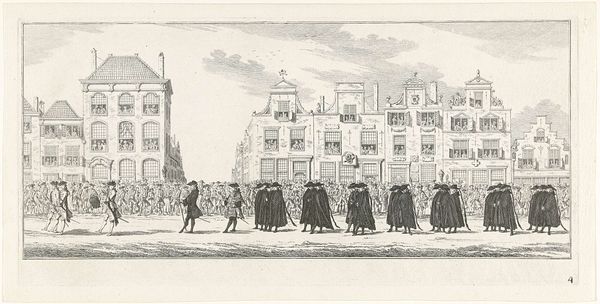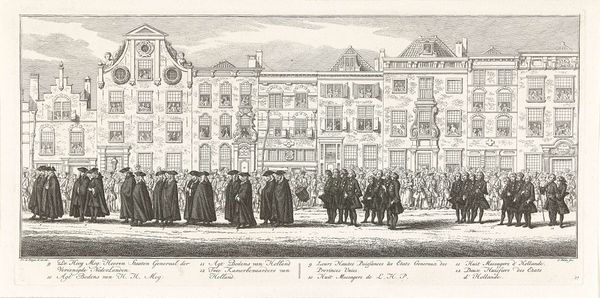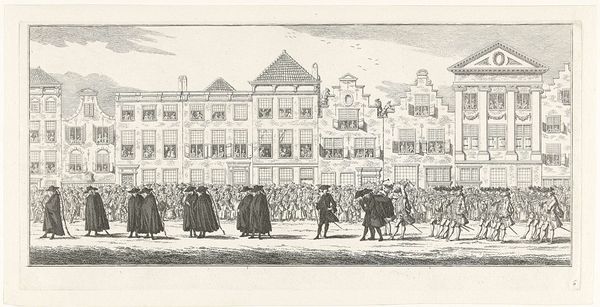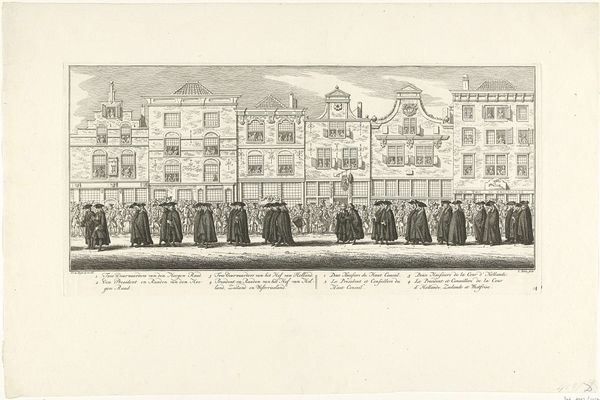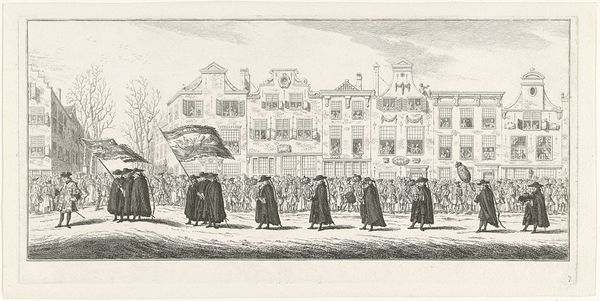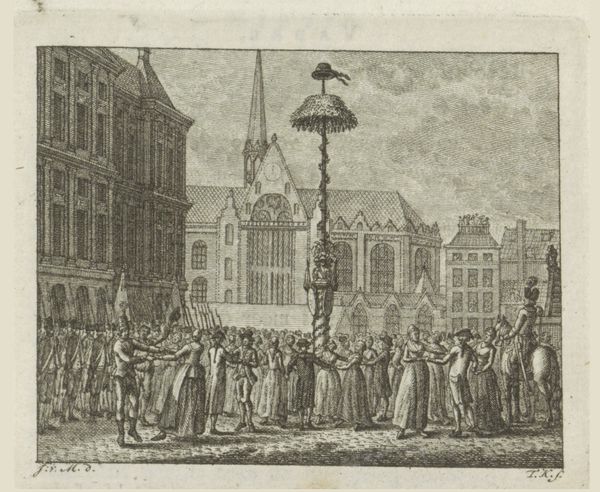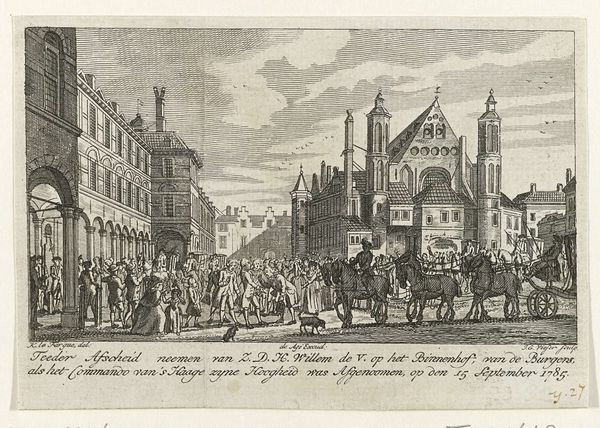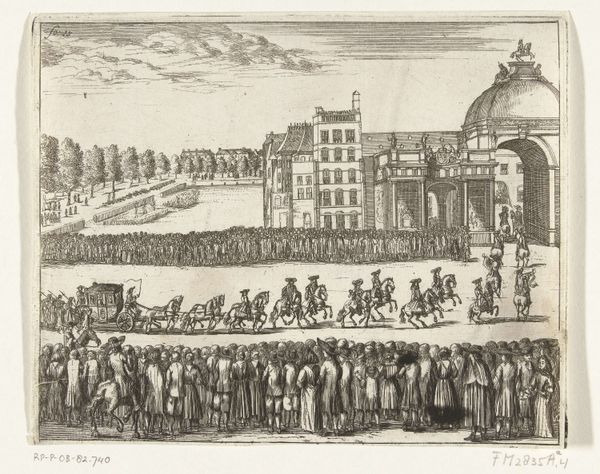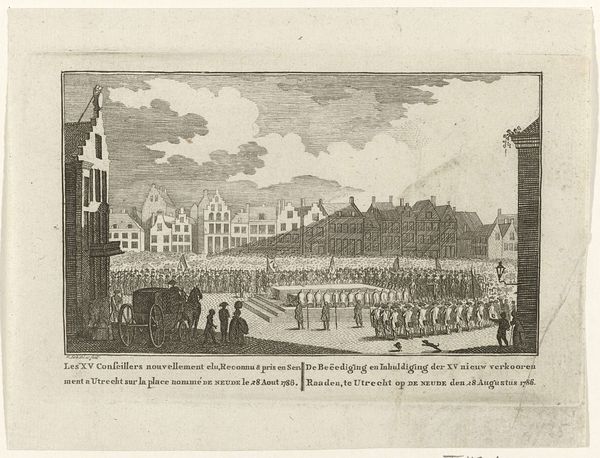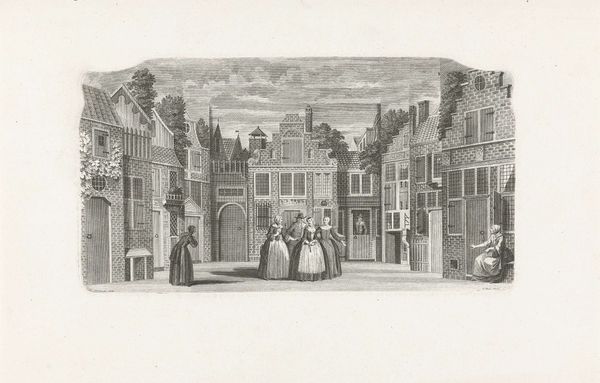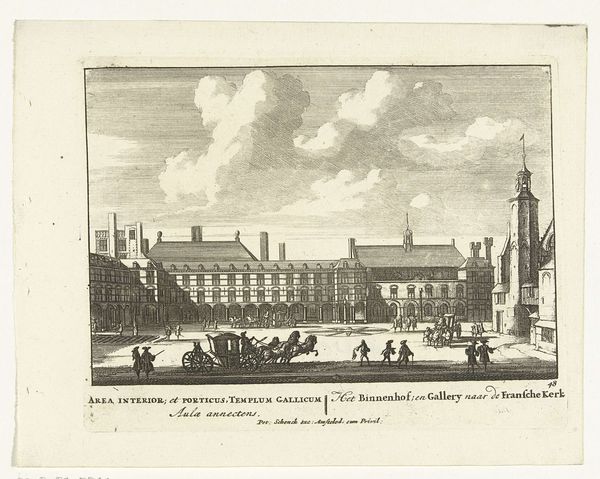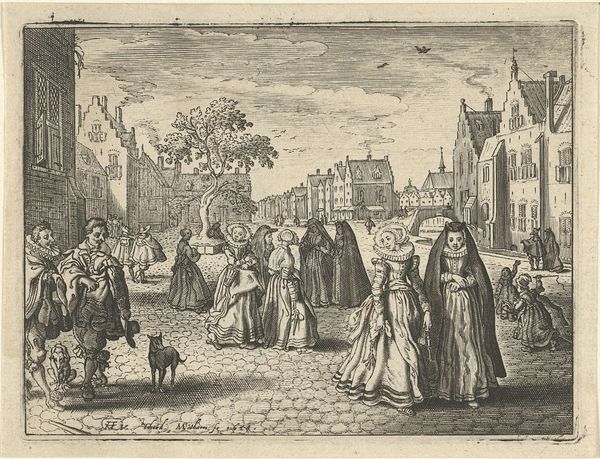
Leden en personeel van de Hoge Raad en Hof van Holland in de lijkstoet van Anna van Hannover te Delft, 1759 1759 - 1761
0:00
0:00
drawing, print, ink, engraving
#
drawing
#
baroque
#
dutch-golden-age
# print
#
pen sketch
#
old engraving style
#
ink
#
cityscape
#
history-painting
#
engraving
Dimensions: height 194 mm, width 397 mm
Copyright: Rijks Museum: Open Domain
Curator: Looking at this somber cityscape, one can't help but notice the deep blacks achieved through what appears to be meticulous engraving work. Editor: Indeed. This print, made by Simon Fokke between 1759 and 1761, depicts "Leden en personeel van de Hoge Raad en Hof van Holland in de lijkstoet van Anna van Hannover te Delft, 1759" – or, the members and staff of the High Council and Court of Holland in the funeral procession of Anna of Hanover in Delft. The cityscape sets the scene with great accuracy, wouldn’t you say? Curator: Absolutely, and if we consider this as a product of its time, we see it less as a spontaneous artistic expression and more as a record, a reproducible document for the consumption of a specific segment of Dutch society. The pen and ink lines were then multiplied using the engraving technique which is an established form of art production during the Dutch Golden Age. Editor: The long, dark robes worn by the council members – don’t you feel they evoke a profound sense of gravity? These aren’t just garments; they are emblems of power, justice, and tradition, reflecting the enduring impact of loss and succession on those who represent civic institutions. Note also the placement of onlookers at each window along the street; there are signs of people throughout the artwork. Curator: Yes, the contrast of black ink against the stark white of the paper really emphasizes those emblems and signifiers. And thinking about it as a drawing first, there must have been countless hours involved to get these details so exact. The lines and density are all very precise. You can appreciate the engraver's skill when thinking of this reproductive labour and craft. Editor: Consider what Anna of Hanover symbolized in Dutch society. She wasn't merely royalty, but a cultural and political bridge. Her death marks the ending of an era and calls into question dynastic continuation. By depicting this event, Fokke captured the societal shifts and collective mourning, echoing themes of impermanence that were familiar Baroque motifs. Curator: A worthwhile insight! This leads me to consider the accessibility of this print for its intended audience. This type of work was crucial for informing and shaping public opinion during this period. The production and dissemination of such prints reinforced power structures of the time. Editor: What you are saying aligns perfectly with my understanding that Fokke captured the iconography of an era. It invites us to remember that beneath official garments, symbols of the state, and historical records are layered narratives, reflections on death and cultural loss—aspects relevant even today.
Comments
No comments
Be the first to comment and join the conversation on the ultimate creative platform.
